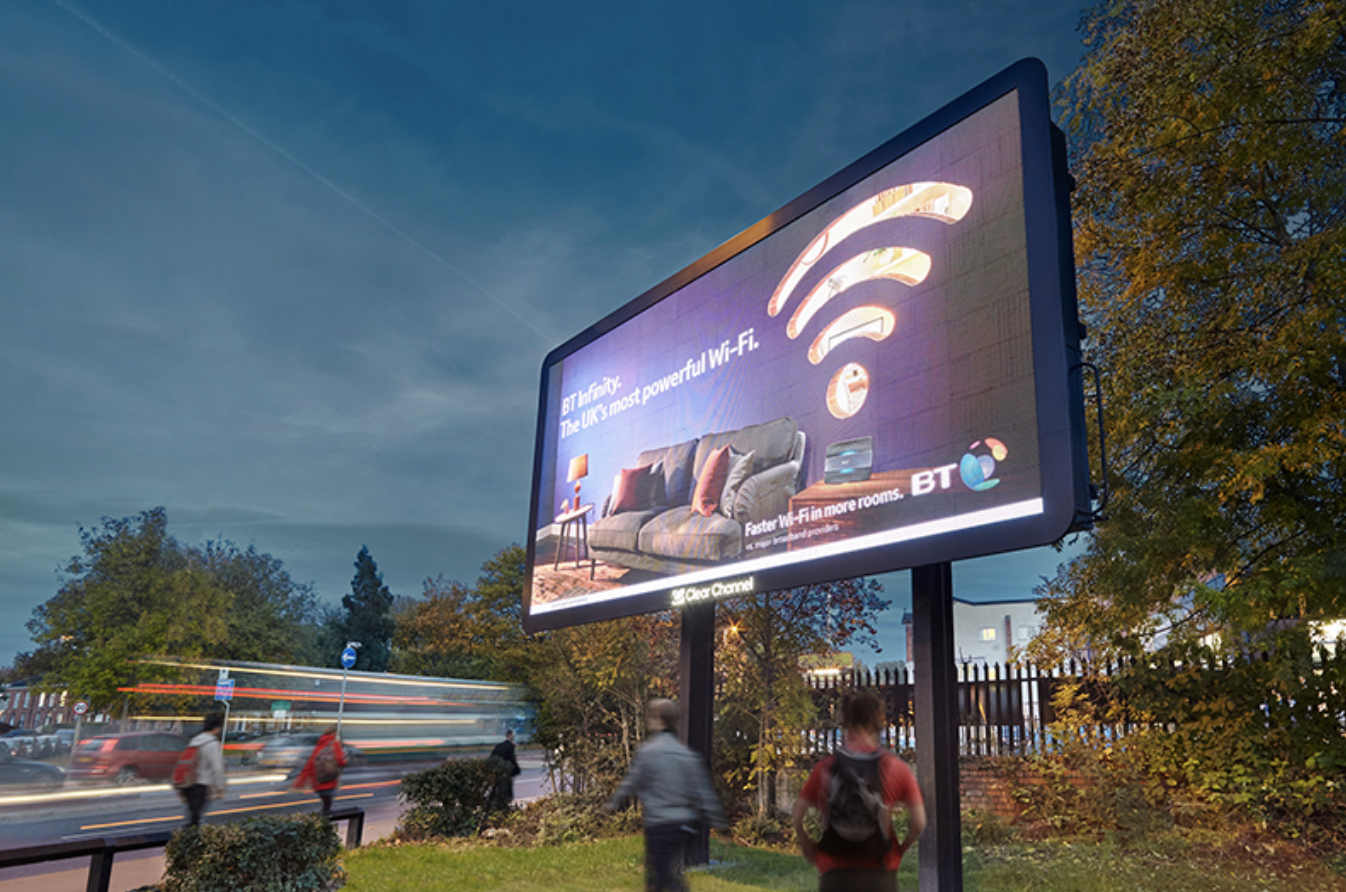Exploring the Shift from Billboards to Digital Out-of-Home (DOOH) Ads

Ever thought about dipping your toe into outdoor advertising for your business? Digital out-of-home (DOOH) advertising has emerged as a game-changer in the realm of marketing and brand promotion for businesses of all sizes looking to capture their audience's attention. DOOH stands out for its ability to combine the physical presence of traditional billboards with the dynamic engagement of digital technology.
And, the really great ads are like the commercials of previous generations that get chatted about over water coolers (or Slack, our modern water cooler for remote workers!), allowing your brand to reach even more people.
From Digital Billboards to Transit Ads
One of the most recognizable forms of digital out of home advertising is digital billboards. These are typically found in high-traffic areas like highways, city centers, and bustling commercial districts. Their large-scale presence makes them impossible to miss, offering advertisers the advantage of broad visibility.
But what sets digital billboards apart is their ability to display multiple advertisements in rotation, allowing for greater flexibility and a wider reach. Another significant segment within DOOH is transit advertising. This format leverages the mobility and frequency of public transportation systems to deliver targeted messages.
From digital screens in buses and trains to interactive ads in transit stations, this type of DOOH turns commute time into an engaging brand experience. It's particularly effective in metropolitan areas, where a large number of commuters are exposed to these ads daily.

In addition to these, place-based digital displays in locations like malls, airports, and sports arenas offer unique opportunities for contextual advertising. These screens can be found in areas where people gather, wait, or engage in leisure activities, making them ideal for capturing audience attention in a more relaxed and receptive state.
Each of these DOOH formats presents businesses with distinct advantages. Digital billboards offer wide visibility, transit advertising connects with on-the-go consumers, and place-based displays engage audiences in specific contexts. As we delve deeper into DOOH advertising, it becomes evident that its diverse formats are not just about being seen – they're about creating meaningful, contextually relevant interactions with consumers.
Some of our Favorite Digital Ad Campaigns
1. Responsive MacAfee Ad that Changes with the Weather
How are you going to not stop and smile seeing an ad space like this, especially one that you walk by every day on your commute?
For this campaign, McDonald's took digital out-of-home advertising to a new level by syncing their ads with the thermometer. On those hotter-than-average days, when the temperature soars above 22 degrees Celsius, these digital screens come alive, offering a visual oasis with their frosty drink ads.
And when the heat intensifies to 25 degrees Celsius or more, the billboard gets even smarter. It customizes the message by displaying the name of the city along with the current temperature, making the ad feel personal and timely.
This strategic move by McDonald's goes beyond traditional advertising. It's a fun, dynamic approach that aligns the product – cool summer beverages – with the exact moment when potential customers would crave them the most.
By leveraging the power of context and real-time data, McDonald's didn't just advertise; they connected with their audience, offering a relevant and engaging solution to beat the heat.

2. Duolingo's Quitter's Day Campaign
If you've ever used Duolingo, you know that judgy look the owl is going to be giving you if you don't keep up with your daily practice. This very clever campaign from a few years ago plastered his face all over Times Square.
Duolinngo has a reputation as a global powerhouse in language learning. Millions use the platform to sharpen their language skills, drawn by its unique, gamified approach and those hard-to-ignore notifications. As you can see here, the ads were a brilliant, strategic nudge, reminding people to stay true to their New Year's resolutions and keep learning languages.
On top of this, they offered a very clever 'Streak Repair Shop' pop-up, so that anyone who had broken their streak already could do a quick repair and be on their way again for the new year.
3. Anando Milk's Show of Advertising Strength
An older choice, but we love this amazing piece of guerilla marketing from Anando Milk on a building in Mumbai.
This ad is more than just a visual spectacle; it's a clever blend of inspiration and aspiration, aiming to motivate children through awe-inspiring imagery while reassuring parents of the nutritional benefits of milk.
DOOH ads in general are a great opportunity for guerrilla marketing, because with great placement and design, they can really stand out in the modern advertising landscape, and as you can see above, the urban landscape.

But is Out of Home Advertising Viable for Small Businesses?
Yes, it can be! These big ads are great for small businesses, but of course you have to proceed thoughtfully in terms of placement, design, and where your best audience is likely to be. The basic costs will be defined by many of the usual considerations related to any advertising.
Think location, screen size, ad duration, and the specific time slots chosen for the ad to run. High-traffic areas like city centers or popular tourist spots typically come with a higher price tag due to the increased visibility they offer. Conversely, more localized or less densely populated areas might provide more budget-friendly options.
But, DOOH is certainly an option for smaller businesses. Digital platforms now allow for more targeted advertising, meaning businesses can choose when and where their ads are displayed, potentially reducing costs. For instance, selecting non-peak hours or less central locations can make this form of advertising more affordable. It's well worth a look, especially for local businesses.
Conclusion
Businesses now have access to a distinctive combination of visibility and interaction with digital out-of-home advertising, which has replaced traditional billboards. Creative, dynamic campaigns that attract viewers in a variety of contexts—from city centers to public transportation—can be realized using DOOH advertisements.
Even small firms can benefit from this changing advertising landscape with various targeting possibilities, therefore it's worth taking into account for contemporary marketing plans.







